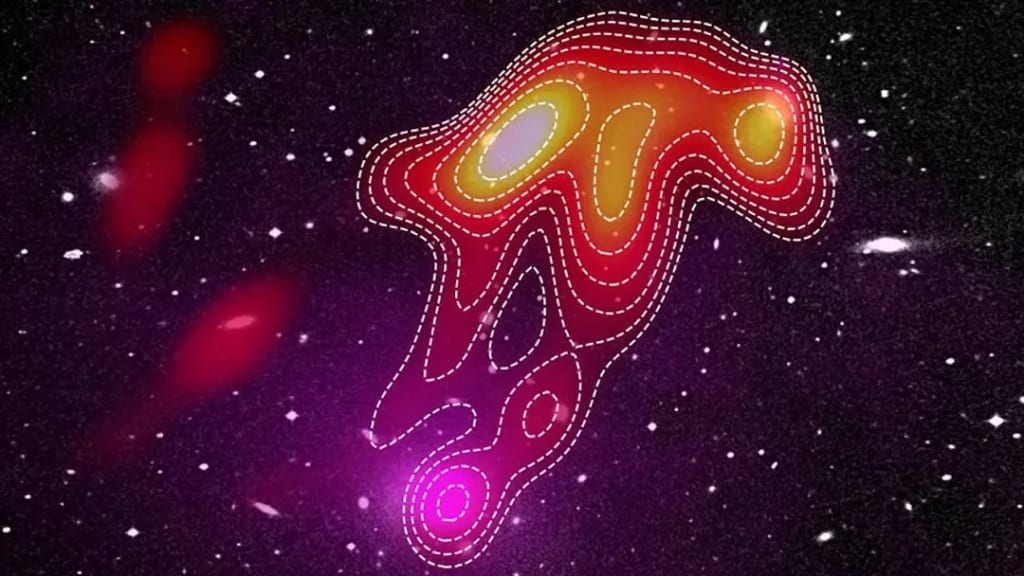Unraveling Cosmic Mysteries: The WOW Signal, Black Hole Beats, and Earth's Eerie Sounds
Astronomical Anomalies and Earthly Enigmas That Defy Explanation

Have you heard about the mysterious WOW signal that has baffled astronomers for over 40 years? Buckle up because there's some intriguing news about this cosmic puzzle. For those who might not know, the WOW signal was a radio burst detected in 1977 by an astronomer using the Big Ear radio telescope in Ohio. The signal was so unique and intense that the astronomer scribbled "WOW!" in the margin of the data printout, and the name stuck.
What made the WOW signal so special? For one, it has never been detected again, despite numerous attempts to observe it in the same region of space. It was a cosmic one-hit-wonder. Scientists have been trying to decipher the mystery behind it for decades. Was it a message from an intelligent civilization or just random cosmic noise? One study suggested that the WOW signal was caused by a comet named 266/P Christensen, which passed through that region in 1977. However, this theory was dismissed since comets do not emit such radio waves.
Another theory proposed that the WOW signal might have come from a sun-like star in the constellation of Sagittarius, located 1,800 light-years away. Despite this star’s promising characteristics—similar temperature, luminosity, and size to our Sun—scientists couldn’t conclusively link the WOW signal to it. This leaves us back at square one, with no definitive explanation for the WOW signal.
While the search for extraterrestrial life continues, astronomers look for technosignatures—signs of technology that might indicate advanced activity in space, like laser emissions or radio signals that cannot be explained by natural phenomena. This search remains a cornerstone of our quest to understand the universe and our place within it.
Switching gears from the cosmos to the depths of our planet, let's talk about the sounds of black holes. These cosmic entities, with gravity so strong that not even light can escape, produce some eerie noises. Scientists have been studying these "sounds" for years. As gas and dust swirl around a black hole, they heat up and emit X-rays, which our instruments can detect. These X-rays are akin to musical notes in a cosmic symphony. Different black holes have unique "tunes," much like cosmic DJs spinning tracks for the universe to groove to. Some black holes emit mellow, soothing sounds, while others produce wild, intense beats.
In 1997, scientists recorded another eerie sound from a different source—the deep ocean. This sound, known as the "Bloop," was a loud, low-frequency noise that lasted for about a minute and was picked up by underwater microphones 3,000 miles apart. Theories abounded, from giant sea monsters to hidden submarines. However, in 2005, scientists discovered the true culprit: an iceberg. The Bloop was the sound of an iceberg cracking and shifting, demonstrating the fascinating, often bizarre acoustics of our planet.
No playlist of mysterious sounds is complete without a tale of heartbreak. Enter the story of the "Loneliest Whale in the World," first recorded in 1989. This whale's call, at 52 Hertz, is much higher than the typical blue whale’s frequency range of 10 to 40 Hertz. This led scientists to believe that the whale might be unable to communicate with others, earning it the title of the loneliest whale. However, recent research suggests that the loneliest whale might not be so lonely after all. Other whales with similar peculiar calls have been detected, indicating that unique whale dialects might exist. The loneliest whale’s call has also been getting deeper over the years, suggesting it might have found some whale friends after all.
These stories remind us of the vastness and mystery of our universe and planet. From the unexplained WOW signal and the funky sounds of black holes to the eerie Bloop and the evolving call of the loneliest whale, there's still so much to learn and discover. So, if your curiosity has been piqued, share these tales with your friends and keep exploring the wonders of the cosmos and our own world.
[Written with assist of AI for grammar, readability, and fact checking.] - Mc
About the Creator
Eldrick
˚ ༘♡ ·˚꒰ᥕᥱᥣᥴ᥆꧑ᥱ t᥆ ꧑ᥡ bᥣ᥆g꒱ ₊˚ˑ༄
Hello I am Eldrick, and LOVE to write about random cool things!!
!!Some of my content uses the help of AI for grammar, english is not my first language. I hope you understand!!
Enjoyed the story? Support the Creator.
Subscribe for free to receive all their stories in your feed.






Comments
There are no comments for this story
Be the first to respond and start the conversation.